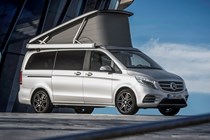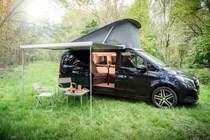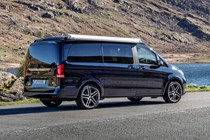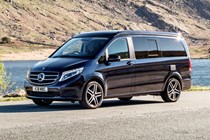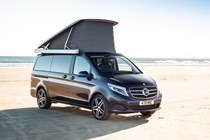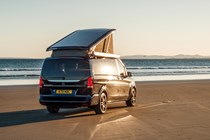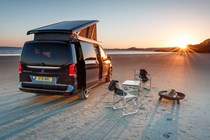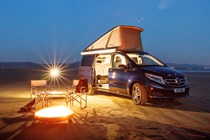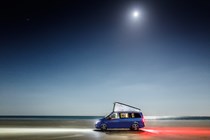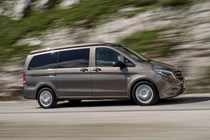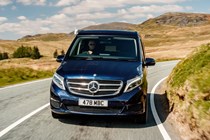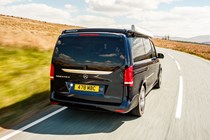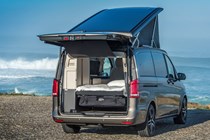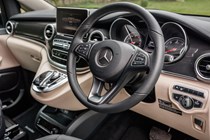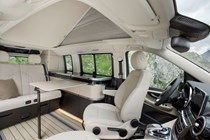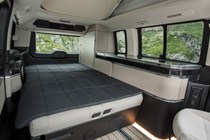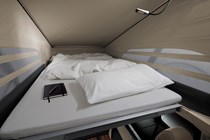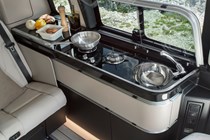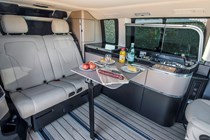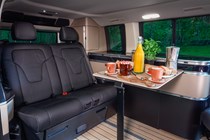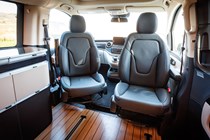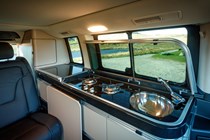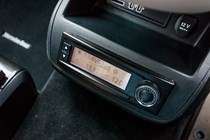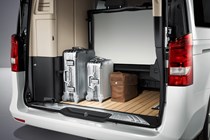
Mercedes-Benz V-Class Marco Polo review
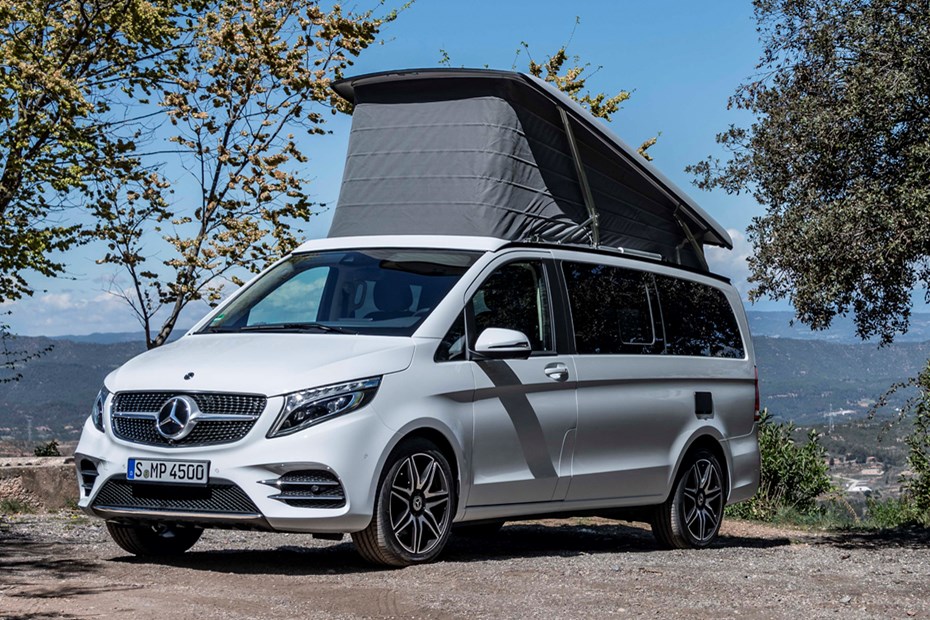
At a glance
| Price new | £49,900 - £59,240 |
|---|---|
| Used prices | £29,569 - £50,100 |
| Road tax cost | £305 - £600 |
| Insurance group | 37 - 42 |
Get an insurance quote with

|
|
| Fuel economy | Not tested to latest standards |
| Range | 678 miles |
| View full specs for a specific version | |
Available fuel types
Diesel
Pros & cons
- Glitziest luxury camper van yet
- Beautifully crafted camping gear
- Undaunting to drive day-to-day
- Double bed very comfortable
- Up to five seats but only four beds
- Much pricier than VW California
- Sliding door on wrong side for RHD
Mercedes-Benz V-Class Marco Polo (17-19) rivals
Overview
This chrome-laden camper van is the Mercedes-Benz V-Class Marco Polo. It’s based on the V-Class MPV, which itself is essentially a plusher version of Mercedes’ Vito van.
While previous iterations of the Marco Polo have been sold on the Continent for some years, it has never made it to the UK in right-hand drive – until now.
In 2017, Mercedes relented and launched the V-Class Marco Polo in Britain, designed to compete directy with the Volkswagen California. They’re the only two factory-fit camper vans made in-house by mainstream car makers, with Mercedes’ conversion taking place at the factory with kit devised by experts Westfalia. All other campers on the market are made by third-party conversion specialists.
Mercedes-Marco Polo: the range choice
Both pre- and post-the Marco Polo’s mild 2019 facelift, there’s been a range of two engine choices. Orginally the V 220 d and V 250 d were fitted with Mercedes’ older 2.1-litre diesel, while newer V 220 d and V 300 d versions have the much more refined 2.0-litre diesel.
As per the regular V-Class line-up, both Sport and AMG Line trim levels are available, while there are two types of camper layout available: the Marco Polo Horizon is a five-seater and does without the built-in cupboards, while the more expensive Marco Polo has all everything including the kitchen sink.
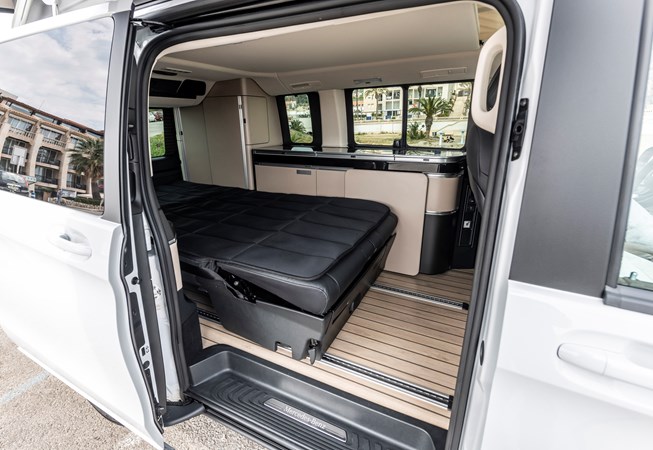
Because this is a leisure vehicle where outright performance is less of a priority, we’d happily recommend either derivative; however, if you often tow, travel in hilly areas or carry heavy loads, we’d upgrade to the older V 250 d if buying used or the new V 300 d.
Just watch out for punchy prices: make no mistake, this is more expensive than the VW California competition.
What does ‘Long’ mean in the Marco Polo’s name?
Good question. The full name of the Marco Polo models are the V 220 d Long and V 300 d Long. This refers to the length of the body; the V-Class MPV, upon which the camper is based, is available with a choice of three lengths and this vehicle uses the middle version, confusingly called Long.
It’s consequently very roomy, with plenty of space for use as a day-to-day people carrier, or at weekends when it converts easily into a mobile home. Note though that the Horizon has five seats as standard, the pricier Marco Polo just four, with a fifth individual seat being optional.
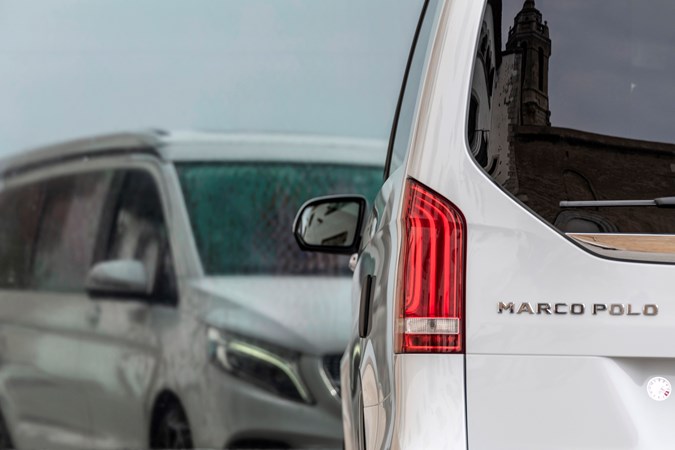
The Mercedes-Benz V-Class Marco Polo’s party trick is its glamping transformation. Park up, press a button and the roof raises electrically, to create extra headroom in the passenger compartment so you can stand up while cooking at the fitted kitchenette. When night falls, pull a lever and a separate base pulls down from the ceiling to create a rooftop double bed.
The rear seats fold flat to convert into a second double bed down below, making this a viable four-berth home-from-home. Note that the more comfortable bed for grown-ups is up above, where you’ll benefit from a super-flat mattress with clever springs for added padding.
How does the Marco Polo drive?
For such a big vehicle (it stretches to 5.1m long), the Marco Polo is remarkably easy to thread along British roads. All versions come with an automatic gearbox (seven-speed until 2019, a nine-speeder thereafter) and performance is adequate for keeping up at motorway speeds.
There are a few creaks and groans over crashy road surfaces, but these are no worse than in any other commercial or camper van we’ve driven and it rides reasonably well for such a big vehicle. Happily, a reversing camera is standard, making it a cinch to park up.



